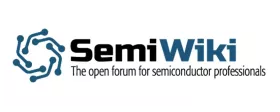What changes to expect in Verification IP landscape after Synopsys acquisition of nSys?
Even if nSys acquisition by Synopsys will not have a major impact on Synopsys’ balance sheet, it is a kind of earthquake in the Verification market landscape. After the Denali acquisition by Cadence in 2010, nSys was most probably the market leader in verification IP, if we look at the independent VIP providers (excluding Cadence). The company VIP port-folio can bear the comparison with Cadence, as nSys supports: PCI family, Communication standards, Storage Interfaces, USB Port, DDR3/2 Memory Controller, MIPI, AMBA and some miscellaneous interfaces. nSys being privately owned, we don’t know the company revenue, neither if the company is profitable. Was this acquisition an “asset sale”, and just an opportunistic deal closed by Synopsys at low cost, with the side effect to compete directly with Cadence in a market where the company has heavily invested during the last three years? Or the goal is to consolidate Synopsys position in the Interface IP market, where the company is the dominant provider, present, and leader, in every segment (DDRn, PCIe, USB, SATA, HDMI, MIPI…), by adding “independent” VIP to the current offer?
To read the full article, click here
Related Semiconductor IP
- Network-on-Chip (NoC)
- 12-bit, 400 MSPS SAR ADC - TSMC 12nm FFC
- UCIe PHY (Die-to-Die) IP
- UCIe-S 64GT/s PHY IP
- UA Link DL IP core
Related Blogs
- Industry's First Verification IP for Arm AMBA CHI-G
- Verifying CXL 3.1 Designs with Synopsys Verification IP
- Industry's First Verification IP for PCIe 7.0
- Industry's First Verification IP for Display Port Automotive Extensions (DP AE)
Latest Blogs
- Design specification: The cornerstone of an ASIC collaboration
- The importance of ADCs in low-power electrocardiography ASICs
- VESA Adaptive-Sync V2 Operation in DisplayPort VIP
- Design, Verification, and Software Development Decisions Require a Single Source of Truth
- CAVP-Validated Post-Quantum Cryptography
